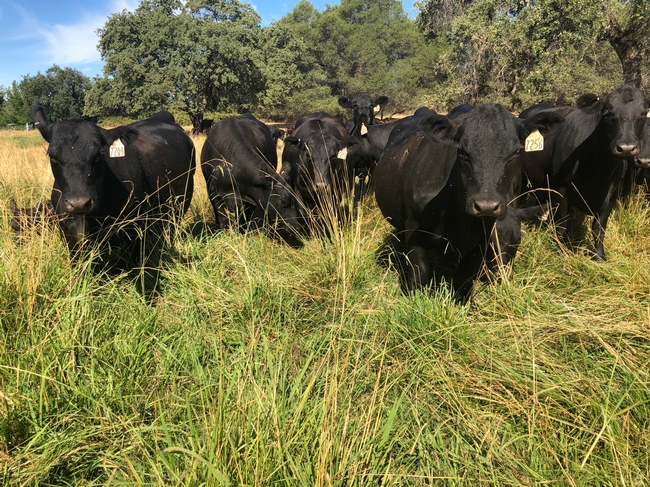New UC studies outline costs of producing irrigated pasture in the Sierra Nevada foothills
Two new studies on the costs and returns of establishing and producing irrigated pasture in the Sierra Nevada Foothills have been released by UC Agriculture and Natural Resources' Agricultural Issues Center. Ranchers in Nevada, Placer and surrounding counties may find the cost estimates useful for planning.
Based on 40 acres of leased ground, the studies focus on establishment by tilling the soil, using conventional cultural practices and re-establishment of pasture using no-till cultural practices. The two separate studies, by Dan Macon, UCCE livestock and natural resources advisor, and Donald Stewart of the Agricultural Issues Center, estimate the cost of establishing or re-establishing a pasture and producing pasture over its 30-year life span.
There are two methods of establishing a pasture. One method uses conventional cultural practices, destroying the existing pasture and preparing the soil, or seed-bed, using conventional tillage practices.
The other no-till method of re-establishing the pasture uses high-intensity grazing and herbicides to destroy the existing pasture and plant new pasture using a no-till seed drill.
Their analysis reports the differences of machinery costs and methods. The reported prices for materials, equipment and custom services are based on January 2020 figures.
UC Cooperative Extension farm advisors, specialists, grower cooperators and other agricultural associates provided input and reviews. The authors describe the assumptions used to identify current costs for pasture establishment and production, material inputs, cash and non-cash overhead. A ranging analysis table shows profits over a range of prices and hay yields.
The new studies are “2020 - Sample Costs to Establish or Reestablish and Produce Irrigated Pasture in the Sierra Nevada Foothills, Flood Irrigated” and “2020 - Sample Costs to Produce Irrigated Pasture in the Sierra Nevada Foothills, Flood Irrigated.”
Both studies can be downloaded from the UC Davis Department of Agricultural and Resource Economics website at http://coststudies.ucdavis.edu. Sample cost-of-production studies for many other commodities are also available on the website.
For additional information or an explanation of the calculations used in the studies, contact Donald Stewart at the Agricultural Issues Center at (530) 752-4651 or destewart@ucdavis.edu.
For information about irrigated pasture establishment and production in Placer, Nevada, Sutter and Yuba counties, contact UCCE livestock and natural resources advisor Dan Macon at dmacon@ucanr.edu.


Posted by Charles A. Raguse on May 12, 2020 at 8:19 AM